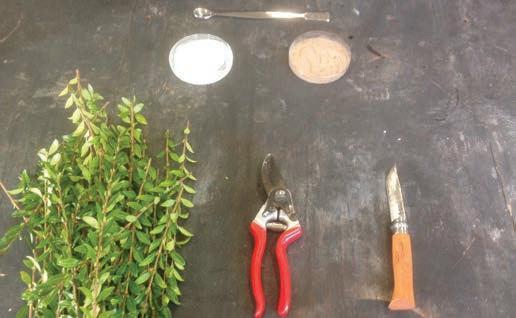05 / NURSERY
Practically Sustainable
Lots of people talk a good sustainable game, few actually play by the rules. John Murphy, owner and operator of Annaveigh Plants explains how his personal philosophy and growing knowledge of sustainable practice are playing out on a day to day basis
A
nother growing season draws to a close with its usual spectacular show of colour and we reflect on crop performance and plan next season’s land usage. After a very late planting the growth was good this year with rain coming at the right time. As tree growers, we have to plan land usage and crop positioning four years in advance. To ensure the land is ready for a new crop we are deciding now on the locations for planting in spring 2018, one season in advance. These decisions have to be taken now so we know where to sow the next green manure crops and ensure any perennial weed populations are removed prior to planting. Sustainability, what is it? Well, for me, it’s creating a soil with very high organic matter that ensures a good structure for the future. It’s reducing the level of chemicals we use and finding ways to carry out operation such as the use of electronic platforms instead of diesel models. It’s using bare root trees when it’s unnecessary to rootball, thereby avoiding massive extra fuel costs and risking the movement of soil borne pests. It’s about examining where your inputs come from. Some years ago we stopped purchasing our canes from a particular supplier because they were coming from the wild in China, now all our canes come from farmed plantations. It’s about trying to reduce and recycle the waste produced on the nursery. For example, when our stock of bare root bags is used, we will change over to biodegradable plastic for all our bare root plants. We can grow trees in a monocrop culture with inorganic fertilisers and not worry, but this causes many environmental problems such as nitrogen leaching into the ground water. Nurseries by nature assume they are eco friendly because they are growing nice plants but the truth is far from it. Look at the ground water problems in Holland and in parts of Italy.
As an industry we need to have a close look at what we are doing for sustainability. Long term land resting is very difficult on the nursery as we only have 80 acres at our disposal, and as the market improves the pressure on the land will increase. So we have developed a regime of short term resting along with green manure crops and the liberal used of farmyard manure, an increasingly difficult commodity to obtain. A decision on which green manure to use depends on the intended crops. If it’s the Rosaceae species then we use marigolds. For other crops we look at the soil analysis and cropping history before we decide. Before it ever became trendy to talk about sustainability, we practiced production methods that help keep our soil in good heart. All production units have permanent grass rows throughout the life of the crop and this is estimated to produce 90 tonnes of dry matter annually, which goes straight back into the soil. The grass also helps to preserve the soil structure and greatly reduces soil damage during the lifting season. Chemical weed control is halved with the use of grass rows and provides a habitat for many species of animals, especially voles. In order to reduce artificial fertiliser usage we gather up and spread over 1,000 tonnes of farmyard manure on the nursery each year. The cost of this is higher than using artificial fertilisers but we know you have to feed the soil properly to keep it in good health. Continuous addition of organic matter keeps the soil healthy and encourages a very fibrous root system on the trees, an essential to successful transplanting. In addition to the manure we now grow green manure crops on all fallow land. This year we have seven acres of mustard, one acre of vetch and two acres of marigolds. All these crops have a purpose: each will prevent soil erosion and suppress weeds
Autumn/Winter 2016 / www.horticulture.ie / HORTICULTURECONNECTED
13











